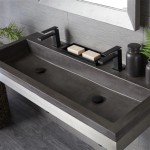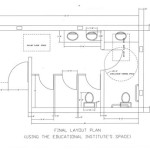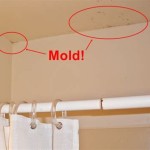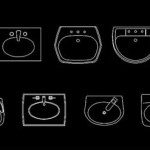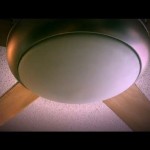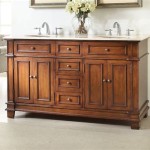Mirrors to Stick on Bathroom Tiles: A Comprehensive Guide
Bathroom mirrors are essential for daily grooming routines. Traditional mirrors often require complex installation processes involving drilling and specialized hardware. Stick-on mirrors offer a convenient alternative, providing flexibility and ease of installation. This article explores the various aspects of stick-on bathroom mirrors, from choosing the right type to installation and maintenance.
Types of Stick-on Bathroom Mirrors
Several types of stick-on mirrors are available, each with its advantages and disadvantages. Understanding these differences can help consumers make informed decisions based on their specific needs.
*
Acrylic Mirrors:
Acrylic is a lightweight, shatter-resistant plastic often used in stick-on mirrors. It provides a good reflection but may be more prone to scratching than glass. *Glass Mirrors:
Glass mirrors offer superior clarity and reflectivity compared to acrylic. However, they are heavier and require more robust adhesive backing to ensure secure attachment. *Self-Adhesive Mirrors:
These mirrors come with pre-applied adhesive backing, simplifying the installation process. *Mirrors with Separate Adhesive:
These mirrors require users to apply the adhesive themselves, allowing for greater control over placement and adhesion strength.Choosing the Right Size and Shape
Stick-on mirrors are available in a wide array of sizes and shapes, allowing for customization and integration with various bathroom designs. Consider the available wall space and the desired aesthetic when making a selection.
*
Small Mirrors:
Ideal for compact spaces or for creating a mosaic effect. *Large Mirrors:
Provide a wider viewing area for grooming and can visually expand the bathroom space. *Shaped Mirrors:
Circular, oval, square, and rectangular mirrors offer design versatility.Factors to Consider Before Purchasing
Before purchasing stick-on bathroom mirrors, several factors warrant consideration to ensure a satisfactory outcome.
*
Tile Surface:
The type of tile and its finish can impact the effectiveness of the adhesive. Smooth, non-porous tiles generally provide the best adhesion. *Bathroom Environment:
High humidity and temperature fluctuations can affect the longevity of the adhesive. Choose mirrors and adhesives designed for bathroom use. *Mirror Thickness:
Thicker mirrors are generally more durable but also heavier, requiring stronger adhesive.Preparing the Bathroom Tiles for Installation
Proper surface preparation is crucial for ensuring the successful adhesion of stick-on mirrors. A clean and dry surface is essential.
*
Cleaning:
Thoroughly clean the tiles with a suitable cleaning solution to remove dirt, grime, and soap residue. *Drying:
Ensure the tiles are completely dry before applying the mirror. *Degreasing:
Use a degreaser, like rubbing alcohol, to remove any residual oils or films that may interfere with adhesion.Installing the Stick-on Mirror
Careful installation is essential for a secure and long-lasting bond.
*
Positioning:
Carefully position the mirror on the tile, ensuring it is level and aligned as desired. *Applying Pressure:
Apply firm and even pressure to the back of the mirror to activate the adhesive and ensure full contact with the tile. *Curing Time:
Allow the adhesive to cure fully according to the manufacturer's instructions before using the mirror.Maintaining Stick-on Bathroom Mirrors
Proper maintenance can extend the lifespan of stick-on mirrors and maintain their reflective quality.
*
Cleaning:
Clean the mirror surface regularly with a non-abrasive glass cleaner. *Avoiding Harsh Chemicals:
Refrain from using harsh chemicals or abrasive cleaners that could damage the mirror or the adhesive. *Inspecting the Adhesive:
Periodically check the adhesive for any signs of weakening or detachment.Removing Stick-on Bathroom Mirrors
Removing a stick-on mirror requires careful handling to avoid damaging the underlying tiles.
*
Applying Heat:
Use a hairdryer to warm the adhesive, making it easier to loosen. *Using a Thin Blade:
Carefully insert a thin blade, like a putty knife or a razor blade, behind the mirror to separate it from the tile. *Removing Adhesive Residue:
Use a suitable adhesive remover to clean any remaining adhesive residue from the tiles.Advantages of Using Stick-on Mirrors
Stick-on mirrors offer several advantages over traditional mounted mirrors.
*
Easy Installation:
No need for drilling or specialized tools. *Removable and Reusable:
Many stick-on mirrors can be removed and repositioned. *Cost-Effective:
Generally less expensive than traditional mirrors and their installation. *Versatile:
Available in various sizes, shapes, and designs to suit different bathroom styles.
Diy Mosaic Tile Bathroom Mirror Centsational Style

Diy Mosaic Tile Bathroom Mirror Centsational Style

How To Decorate A Mirror With Tile Sand And Sisal

Walls With Mirrors L And Stick Wall Mirror Tiles Bathroom

How To Decorate A Mirror With Tile Sand And Sisal

How To Mosaic Tile A Mirror Caffeine And Cabernet

Diy Mosaic Tile Bathroom Mirror Centsational Style

How To Stick A Mirror Bathroom Tiles Sanctuary Bathrooms

Anatolia Border L Stick Tile Stickers Kitchen Bathroom In 2024 Mirror Tiles Frame Vinyl Frames

Pin On Affordable Home Decor
Related Posts
